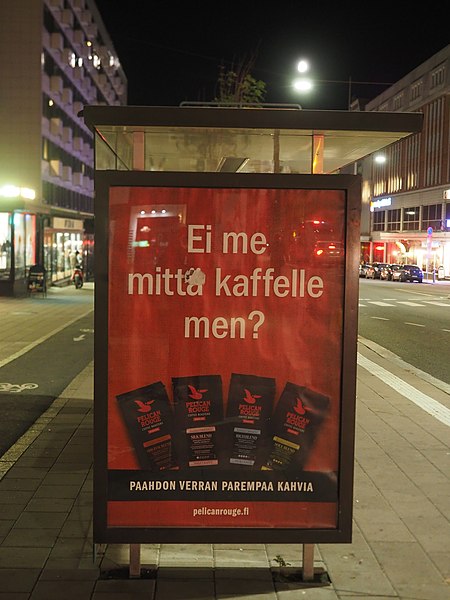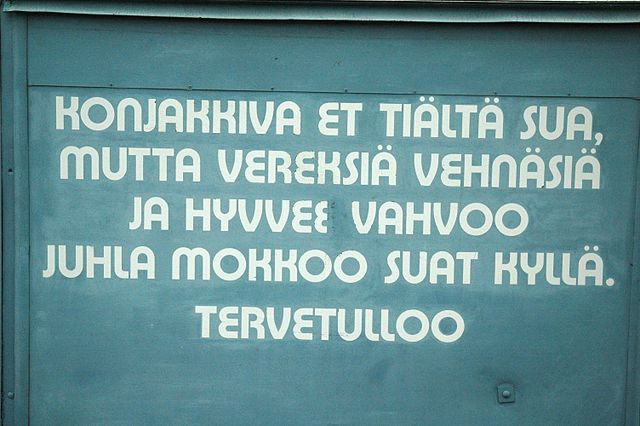The markka, also known as the Finnish mark, was the currency of Finland from 1860 until 28 February 2002, when it ceased to be legal tender. The markka was divided into 100 pennies, abbreviated as "p". At the point of conversion, the rate was fixed at €1 = 5.94573 Mk.
1 Mk, 1983
20 Mk banknote issued in 1862 for the Grand Duchy of Finland. The banknote's obverse depicts the coat of arms of Finland on a Russian double-headed eagle, and was personally signed by the director and the cashier of the Bank of Finland. The text on the obverse is in Swedish, whereas the reverse is primarily in Russian and Finnish.
A 20 Mk coin from 1912
Image: 5 Markkaa Finlands Bank (1897) Nnna 04
Finnish is a Uralic language of the Finnic branch, spoken by the majority of the population in Finland and by ethnic Finns outside of Finland. Finnish is one of the two official languages of Finland. In Sweden, both Finnish and Meänkieli are official minority languages. The Kven language, which like Meänkieli is mutually intelligible with Finnish, is spoken in the Norwegian counties Troms and Finnmark by a minority group of Finnish descent.
Mikael Agricola, a 19th-century drawing by Albert Edelfelt
Elias Lönnrot as depicted in a 19th-century caricature – Lönnrot made several journeys to Karelia and Eastern Finland to collect folklore, from which he compiled the Kalevala.
The Turku dialect is famous for its seemingly inverted questions. For example, "Ei me mittä kaffelle men?" looks like it means "So we don't go for a coffee?" but actually means "Shall we go for a coffee?"
A sign in Savonian dialect: "You don't get cognac here, but fresh wheat buns and good strong Juhla Mokka-brand coffee you will have. Welcome."








